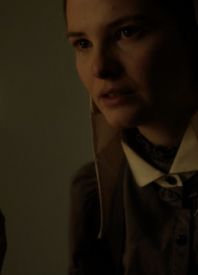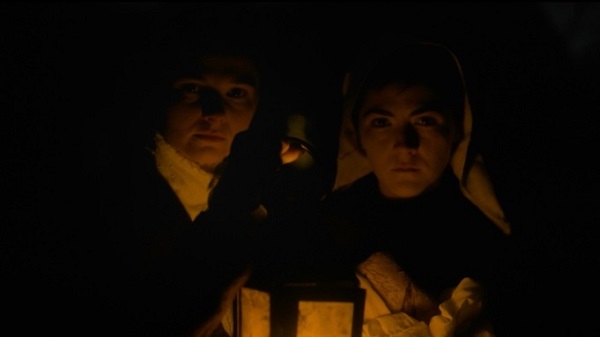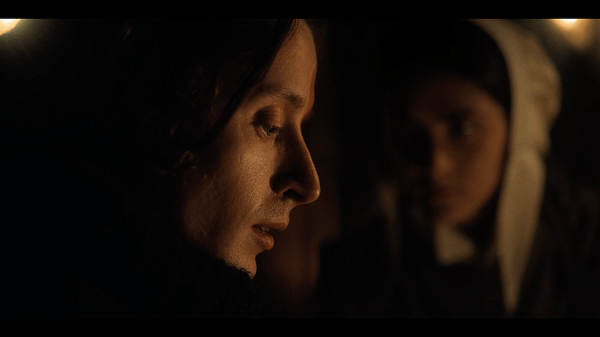
Edoardo Vitaletti’s directorial debut, The Last Thing Mary Saw, opens with a quote from John Calvin. Calvin is the eponymous inspiration behind the little rascal at the centre of Bill Watterson’s cartoons. And he is probably best known for being one of the many theological reformists around the time of the Protestant Reformation. Calvinism is often less associated with Protestantism as Lutheranism and Anglicanism. But it is every bit as important to the modern-day labyrinth that is Catholicism as the aforementioned movements.
In comparison to other Protestant reformations, Calvinism is known for two things. One, is an emphasis on the irreputable and irredeemable nature of human beings as perpetual sinners. The other is a distaste for how the Roman Catholic church venerates the Virgin Mary. Specifically, people know Calvin for disputing Mary’s everlasting virginity. (It’s a position that is in stark contrast to Roman Catholic teachings, because, well, she’s human). After all, to be human is to be fallible, and to be fallible is to sin, and to sin…well, you get the gist.
I want to tread lightly here. I think it’s important to bluntly state that Calvinists are not Puritanical monsters. And I think it’s also important to recognize the fact that John Calvin held these views, which a film that literally invokes “Mary” in its title espouses. This is a direct address on the part of the filmmaker. This is especially true considering that The Last Thing Mary Saw is a film that is about the scars of religious trauma.
There’s a shot early on in the film depicting the eponymous Mary (Stefanie Scott) and her housegirl/secret lover Eleanor (Isabelle Furman, of Orphan fame). Someone is punishing them for their sins and the punishment of choice is making them kneel on individual grains of rice. As the punishment ends and Mary stands up, Vitaletti cuts to a close-up of Mary’s knees. There we can see the individual marks have etched themselves into her knees. Quite literally, this stuff is imprinted onto her.
While I imagine this background information might seem tedious to some, I personally believe it’s crucial to understanding this film. However, I’m also aware that the average viewer is likely to be more entranced by the film’s frame narrative. Throughout the film, Vitaletti flashes forward to a future Mary telling the constable the story of the film. There are some lovely match cuts and temporal shifts throughout the film, which managed to keep me on my toes throughout. It’s not brilliant, but it’s also very effective.
Mary and Eleanor find themselves under the thumb of a repressive Matriarch (Judith Roberts). The Matriarch clearly despises the budding relationship of the two female leads. And she willingly doles out punishments as coercion against any potential Sapphic trysts. As a result, Eleanor convinces the pseudo-groundskeeper to let her and Mary sleep out in the barn, where they continue their romance unbothered. Unfortunately, unbothered only lasts as far as the eyes of a prying young Matthew (Elijah Rayman). As he discovers them in the barn, the Matriarch appears.
For lack of better phrasing, spookiness occurs. Vitaletti’s invocation of gothic horror tropes are neither exceptional nor terrible; rather, they’re purely functional, perfunctory, cromulent, acceptable, or whatever other adjectives you feel best suggest it’s merely “fine”. There are a number of these Eggers-esque period pieces which take places in a rural world from a bygone era. And it’s hard to suggest that, visually speaking, The Last Thing Mary Saw stands out from the crowd. There’s a dreariness to the lighting that cinematographer David Kruta employs here. I’m certain its aesthetically intentional, but I can’t say that I think it looks good.
Where the film really flies is at night, and in the barn; I’m speaking here both visually and emotionally. Easily the most gripping facet of The Last Thing Mary Saw is the romance, which the two female leads largely carry. She’s best known for her turn as the (sort of) child in the gonzo cult classic Orphan, but it’s clear that Isabelle Fuhurman can act. Here she stars opposed Stefanie Scott, her fellow co-star from Laura Terruso’s Good Girls Get High. Scott doesn’t nearly have as much to do, but she manages to make the most of what she has. Maybe, my fatal flaw is that I’m partial to films where two people can find some solace in each other’s arms amidst a world that’s devoid of colour.
Make no mistake, The Last Thing Mary Saw exists in a world devoid of colour. I come back to the Calvinist epigraph, because smarter people than I have long convinced me that epigraphs haunt the text. They’re the first thing you should come back to when you’re done with any film, novel or piece of art that has one. If it’s all God’s plan, then maybe, just maybe, it’s foolish to believe that you can police the desires of others. He probably knows more than you do.



